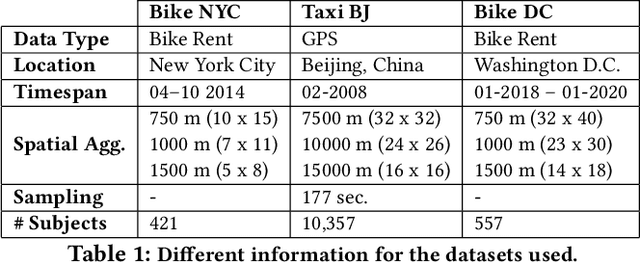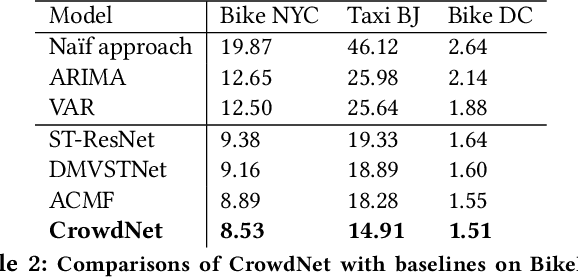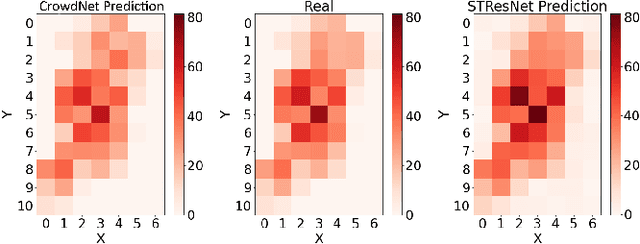Marco Cardia
Enhancing crowd flow prediction in various spatial and temporal granularities
Mar 12, 2022



Abstract:Thanks to the diffusion of the Internet of Things, nowadays it is possible to sense human mobility almost in real time using unconventional methods (e.g., number of bikes in a bike station). Due to the diffusion of such technologies, the last years have witnessed a significant growth of human mobility studies, motivated by their importance in a wide range of applications, from traffic management to public security and computational epidemiology. A mobility task that is becoming prominent is crowd flow prediction, i.e., forecasting aggregated incoming and outgoing flows in the locations of a geographic region. Although several deep learning approaches have been proposed to solve this problem, their usage is limited to specific types of spatial tessellations and cannot provide sufficient explanations of their predictions. We propose CrowdNet, a solution to crowd flow prediction based on graph convolutional networks. Compared with state-of-the-art solutions, CrowdNet can be used with regions of irregular shapes and provide meaningful explanations of the predicted crowd flows. We conduct experiments on public data varying the spatio-temporal granularity of crowd flows to show the superiority of our model with respect to existing methods, and we investigate CrowdNet's reliability to missing or noisy input data. Our model is a step forward in the design of reliable deep learning models to predict and explain human displacements in urban environments.
 Add to Chrome
Add to Chrome Add to Firefox
Add to Firefox Add to Edge
Add to Edge